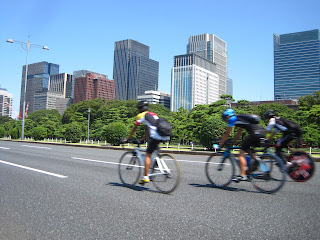When you visit Tokyo, let's go to the shrines and temples for a pray of your travel safety!
Meiji Jingu Shrine (JR Harajuku Station)
Meiji Shrine is dedicated to the deified spirits of Emperor Meiji and his consort, Empress Shoken. The shrine was completed and dedicated to the Emperor Meiji and the Empress Shoken in 1920. Emperor Meiji was the first emperor of modern Japan. He was born in 1852 and ascended to the throne in 1867 at the peak of the Meiji Restoration when Japan's feudal era came to an end and the emperor was restored to power.
Yasukuni Shrine (Subway Kudanshita Station)
The origin of Yasukuni Shrine was established as Shokokusha in the second year of the Meiji era (1869) by the will of the Emperor Meiji. In 1879, it was renamed Yasukuni Shrine. Yasukuni Shrine was established to commemorate and honor the achievement of those who dedicated their precious lives for their country.
Hie Shrine (Subway Akasaka Mitsuke Station)
In 1478, Ota Dokan constructed Edo Castle on the site of the present Imperial Palace. He also erected a Sanno-Hie Shrine in the compound for a guardian deity of the castle. That was an origin of Hie Shrine. The Shogun Ieyasu Tokugawa began ruling Japan from Edo Castle. He also became a patron of the Hie Shrine and worshipped the deity as the protector of Edo, the old name for Tokyo. The citizens of Edo also had the strongest faith in Hie Shrine, which enshrined the guardian deity of the Shogun. In 1657, Hie Shrine and a large part of Edo was destroyed by fire. However, in 1659, Shogun Ietsuna Tokugawa rebuilt the shrine at its present location. Regrettably, the shrine buildings were burnt down again in the bombing of Tokyo during the Second World War, in 1945. The present shrine buildings were constructed in 1958.
Zojoji Temple (Subway Onariomon Station/Shiba Koen Station)
Zojoji was founded in 1393 as an orthodox and fundamental nembutsu seminary for Jodo shu in the east Japan region. After the start of the Edo Period when the Tokugawa shogunate ruled Japan, Zojoji became the family temple of the Tokugawa shogunate family and an unparalleled grand cathedral was built. In those days, its precincts covered an area of 826,000 square meters which also contained 48 smaller attached temples and about 150 grammar schools. Moreover, as many as 3,000 priests and novices always resided here as students.
Kameido Tenjin (JR Kameido Station)
Kameido Tenjin Shrine is located east side of Tokyo Metro. It is famous for its Fuji Flower. Kameido Tenjin was built in 1646 to enshrine Sugawara no Michizane, the God of Education.
Kanda Myojin (JR Ochanomizu Station/Subway Nezu Station)
This shrine is the chief guardian god of Edo and was established in 730. Local people are very proud of Kanda Myojin Shrine's very long history over 1270 years. Kanda Myojin Shrine is very popular with the local people because they feel that if they worship here it will give them: happy family life, success and prosperity in their businesses, and will help them to find a well-matched marriage partner. Recently, because Kanda Myojin Shrine is not so far away from Akihabara, it has become the guardian of IT business. People can get a lucky charm here called the "Protection and Safe keeper of IT Data", which has become increasingly popular. Every year during the New Years celebrations, many of the engineers and people who run businesses from the area come to Kanda Myojin Shrine and buy this lucky charm.
Finally Sensoji Temple in Asakusa. It is one of the most popular places to go among foreign travelers. (Tobu and Subway Asakusa Station)
Each of those temples and shrines have their own history and roles in the traditional Japanese life. You can learn a part of Japanese religions, culture and tradition through visiting the places.




















































